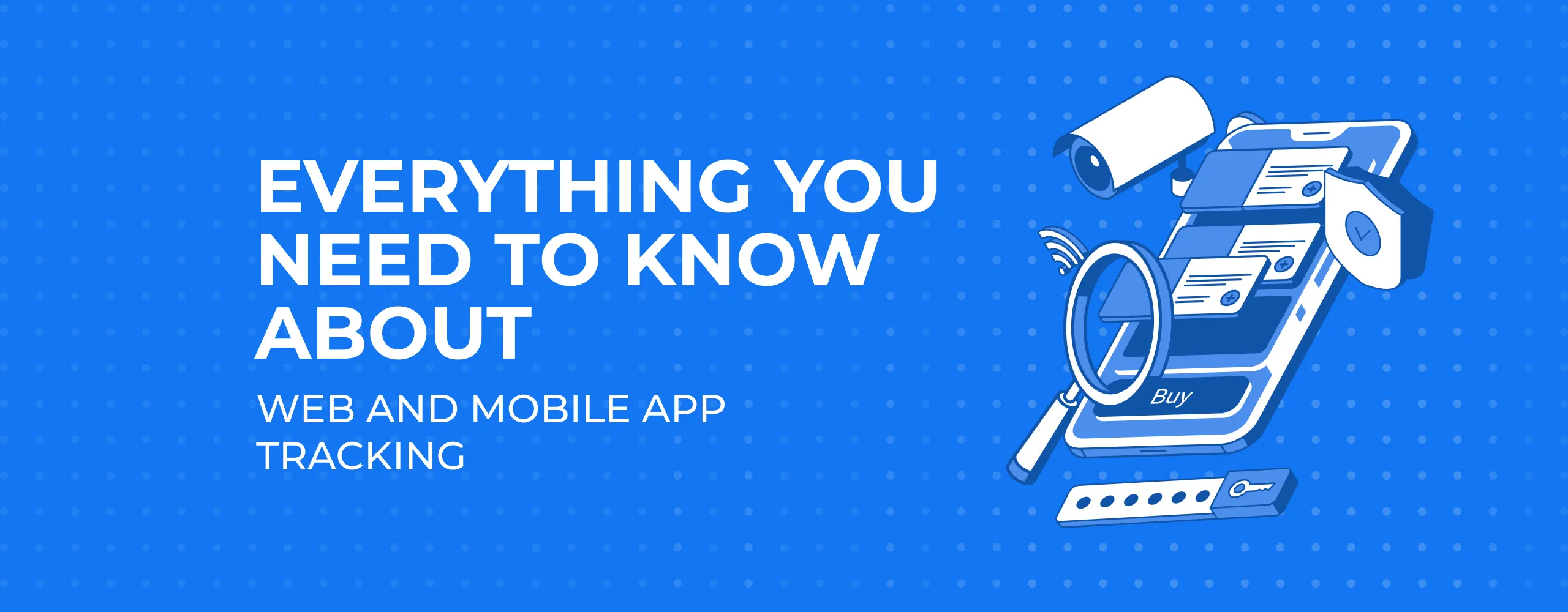
Everything you need to know about web and mobile app tracking

Analytics of applications is certainly highly beneficial for both end users and developers alike. So what is it we need to track in web and mobile apps? Are there any best practices already available? What are our competitors analyzing? Is there any difference in iOS and Android based app tracking?
Tracking fear
Analytics or tracking wasn’t always as popular as it is now. Informed people have always been cautious of sites and mobile and web apps that use a million pop-ups and are continuously pinging massages that are then sent back to their local servers.
There are many concerns when it comes to tracking, ranging from bandwidth usage to application speed all the way to doubts about the contents of messages – in terms of what they say about them.
The primary concern here is the violation of privacy, or the perception that it is being violated. People tend to be wary of any manipulations that lead to their data and online actions being collected and stored somewhere, because of the fear that all this data might somehow be used against them at a later stage.
Shall we track?
In reality, some concerns do have a solid foundation underneath them. There are some sketchy apps and sites that do have criminal intentions and might even be trying to break the law in order to get to your data. However, most tracking is done for different reasons and much better intentions.
User behavior tracking is often done secretly, without informing end users. It is used to inform software developers of the app about what parts are being used, more than others and which areas are ignored. By analyzing this information, application designers can plan improvements to help users with navigation and overall experience.
What to track?
One of the apps we developed had already included several tracking frameworks, so when our client asked to include another tracking mechanism, the big questions popped up: Where is the borderline? How much information can we collect without negatively impacting user experience? Would it be better to just use a single framework and let the client compile the reports based on the tracking data available?
Initially, a sound assumption was to use one standardized tracking framework, which would work both for iOS and Android platform. Google Analytics would work well in this case. As for other frameworks, the data from this framework could be exported to any others, which you, as a client, want to use for your convenience to analyze your app usability.
Best use case
We did a quick research to find the best use cases in app tracking to see if we could incorporate these best practices into our existing tracking framework. During this research, we found a VentureBeat report that included two surprising findings:
– When it comes to tracking, Google Analytics seems to be the most well-known solution, given its market share. However, less than a third of all mobile app developers use it as a primary tracking solution.
– The vast majority of successful app developers use several analytics solutions. Some large scale companies, specializing in mobile app development even roll out their own solutions to get the necessary data.
The pattern here is that the more successful the app becomes; the more tracking solutions are used. But even the titans of app development don’t user over five different tracking solutions. Popular choices, after Google Analytics, include Flurry, Apsalar, Tune, Kochava and BugSense.
It is worth noting that tracking solutions should be selected based on the platform, as there is no solution which works great for all platforms simultaneously. Some are great for iOS, others for Android and so on.
The study also shows that mobile app publishers planning on using the same tracking solution for Google Play and iOS need to reconsider. Each platform requires its own solution. Apsalar, for instance is one of the top solutions for iOS, however, when it comes to Android, for every solution install, there are 14 uninstalls, which raises a red flag. This goes to show that each solution should be assessed based on the platform that the app will work on.
The advice that can be taken from the report:
Select either Flurry or Google Analytics as your primary tracking solution. For additional analytics, make a choice based on what factors matter the most to you at the moment: new customer acquisition, user experience, monetization, engagement and even overall behavioral statistics gathering.
Final Advice
It was interesting to find out that many mobile app developers face similar issues and based on the discoveries of the report, it is actually not a bad decision to use several tracking mechanisms simultaneously. It is also wise to start adjusting to different platforms by using different analytics for each platform. All in all, Google Analytics is a great solution to start with as Google Tag Manager can be used to standardize tracking.





